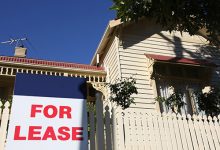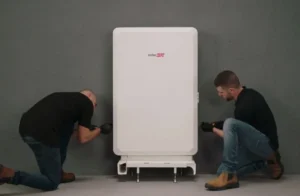The following article is the winner of the 2018 Gill Owen Essay Prize – a contest honouring the memory of Dr Gill Owen , a tireless campaigner in the fields of energy efficiency and social equity. The competition is sponsored by AGL Energy, the Institute for Sustainable Futures at UTS, the Association for Environmental and Energy Equity, Uniting Communities and RenewEconomy. The runners up in the student and non-student categories are published here and here. For more about the Gill Owen Essay Prize, see here.
………………………………………………..
It’s not news that rental homes are less energy efficient than other dwellings. Although energy efficiency pays dividends for an owner-occupier, landlords have little incentive to invest, as they would bear the cost without experiencing the benefits. Rental properties thus tend to be harder and costlier to heat and to cool.
This is not a recent phenomenon. However, current trends make the matter more urgent.
With more people renting in Australia, more people, including more vulnerable people, are living in inefficient rental properties. Further, increasing energy costs means that inefficient rental housing is compounding social disadvantage, through higher power bills and worse health.
In this context, minimum energy efficiency standards for rental properties have never been more urgent.
More renters are living in particularly inefficient homes for longer
Renting is no longer just a stopgap between living with parents and owning a home. As the private rental sector has grown, long-term renting has become much more common.
Consequently, more families are renting, as are more older Australians: two in five rental households now include dependent children, and the population of private renters is ageing more rapidly than the general population. More people are renting, renting for longer, and renting later in life.
These people are living in properties that are much less energy efficient. Renters are four times more likely to live in a home without insulation, and they are less likely to have window treatments, such as curtains.
In the ACT, the only Australian jurisdiction that has a mandatory energy efficiency disclosure scheme for rental properties, one in four disclosed ratings for rental properties is zero.
In contrast, just one in 20 properties for sale has a rating of zero, the lowest possible rating. People who rent are living in another world: a world of inefficient, uninsulated homes, difficult to heat or cool.
Inefficient rental housing perpetuates social disadvantage
For some renters, the cost of energy inefficiency is on their power bill. For others, particularly low-income renters, the cost they face is a home that makes them or their family members sick.
People on low incomes are more likely to be renters and to spend more of their income on utility costs, compounding the harms of inefficient rental properties.
In Australia, two in five households in the lowest income quintile are renters, compared with roughly one in four in the broader population.
Although low-income households spend less on fuel in absolute terms, such expenditure is a greater proportion of their incomes: a recent review found that Australian households in the lowest income quintile spent 6.4 per cent of their income on electricity and gas, compared with 2.8 per cent for households in the middle quintile.
This proportion has increased over the last decade, following striking increases in the real cost of electricity and gas. For low-income households, the inefficiency of rental properties worsens an already dire situation.
The combination of inefficient housing and rising power costs makes it harder for people to heat their homes, endangering their health. Surprisingly, more Australians die from cold weather than from the heat.
This is likely a consequence of poor-quality housing, given that Sweden has a far lower rate of deaths attributable to cold: 3.9 per cent compared with 6.5 per cent in Australia.
Improving the energy efficiency of homes has been linked to reduced time in hospital, lower blood pressure, and fewer days off from work or school. Inefficient rental housing leaves people in a dangerously cold environment, resulting in worse health and preventable deaths.
Minimum energy efficiency standards can solve this problem
Rental properties have such low energy efficiency because of split incentives: “For landlords there is little incentive to invest in energy saving if all the benefits are taken up by tenants but their value is not sufficient to command higher rents.” So, instead of landlords paying for improvements, people in rental properties end up paying the cost of living in an inefficient dwelling.
Attempts to solve this problem with subsidies alone have consistently failed. While various Australian programs have offered landlords financial incentives to improve the energy efficiency of rented properties, uptake has been negligible.
The vast majority of Australia’s landlords are so-called “mum and dad” landlords with just one investment property, and growing use of property managers suggests that they are increasingly reluctant to be hands-on with their investment. It seems that landlords are too disengaged to respond to financial inducements alone.
Instead of subsidies alone, the best option is to take the “carrot and stick approach”: provide incentives through rebates or tax reform, while creating a legal duty and enforcement mechanisms through minimum standards. Landlords should be required to ensure that their property meets a minimum energy efficiency standard before it can be offered for rent.
Minimum standards have a social justice dimension: they ensure all renters can benefit from energy efficiency, not just those able to afford the best properties.
In addition, minimum standards would reduce the opportunities for landlords to extract increased rent from tenants. While energy efficiency features do attract a rent premium, this is because such features are rare and have scarcity value. If features such as ceiling insulation were ubiquitous, they could not attract a premium.
Furthermore, minimum standards are popular. In a Victorian survey of renters and landlords, standards were supported by over 90 per cent of renters and 70 per cent of landlords.
A 2018 survey of 1000 Australians found that 80 per cent supported minimum standards for rental homes “to ensure that they are safe, comfortable and have low energy bills.” The Australian community, including landlords, understands the role of standards to improve affordability and well-being.
People who rent deserve decent homes
Every Australian state and territory should establish minimum energy efficiency standards for rental properties. A growing number of people are living in rental properties, at all stages of life, particularly people on low incomes.
Energy costs are consuming a growing chunk of the household budget, especially for the most vulnerable, who are more likely to be renting. And rental properties have significantly worse energy efficiency than owner-occupied properties, increasing bills and harming health.
While the Australian dream of homeownership is out of reach for a growing number of Australians, the dream of a comfortable, liveable home need not be.
Minimum energy efficiency standards can ensure that an increasing number of vulnerable households, renting privately, can enjoy the right to live safely, in dignity and comfort in their home.







